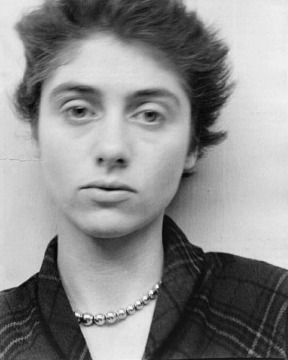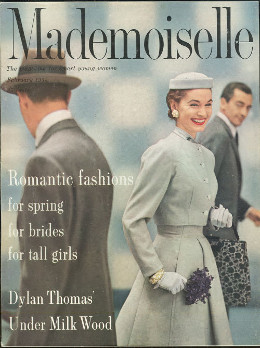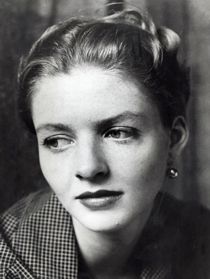Related Research Articles

Diane Arbus was an American photographer. She photographed a wide range of subjects including strippers, carnival performers, nudists, people with dwarfism, children, mothers, couples, elderly people, and middle-class families. She photographed her subjects in familiar settings: their homes, on the street, in the workplace, in the park. "She is noted for expanding notions of acceptable subject matter and violates canons of the appropriate distance between photographer and subject. By befriending, not objectifying her subjects, she was able to capture in her work a rare psychological intensity." In his 2003 New York Times Magazine article, "Arbus Reconsidered", Arthur Lubow states, "She was fascinated by people who were visibly creating their own identities—cross-dressers, nudists, sideshow performers, tattooed men, the nouveaux riches, the movie-star fans—and by those who were trapped in a uniform that no longer provided any security or comfort." Michael Kimmelman writes in his review of the exhibition Diane Arbus Revelations, that her work "transformed the art of photography ". Arbus's imagery helped to normalize marginalized groups and highlight the importance of proper representation of all people.

Mademoiselle was a women's magazine first published in 1935 by Street & Smith and later acquired by Condé Nast Publications.

Linda Morand is an American fashion model, cover-girl and haute couture mannequin during the 1960s and 1970s. She appeared in national ads, magazine covers, TV commercials and national catalogs. She became a fashion archivist and consultant.

Patrick Demarchelier was a French fashion photographer.

Henri Bendel, Inc., established in 1895, was a women's department store based in New York City which in its later history sold women's handbags, jewelry, luxury fashion accessories, home fragrances, chocolate and gifts. Its New York City store was located at 10 West 57th street. In 1985, when purchased by Limited, the new owner moved the store to 712 Fifth Avenue.

Naomi Ruth Sims was an American model, businesswoman and author. She is widely credited as being one of the first African-American supermodels. Sims was first African-American model to appear on the covers of Ladies' Home Journal and Life.

Patricia Bosworth was an American journalist, biographer, memoirist, and actress. She was a faculty member of Columbia University’s school of journalism as well as Barnard College, and was a winner of the Front Page Award for her journalistic achievement in writing about the Hollywood Blacklist.
Geraldine Stutz was an American retail groundbreaker. She was appointed president of Henri Bendel in 1957, serving for 29 years until stepping down in 1986.

Carine Roitfeld is a French fashion editor, former fashion model, and writer. She is the former editor-in-chief of Vogue Paris, a position she held from 2001 to 2011. In 2012, she became founder and editor-in-chief of CR Fashion Book, a bi-annual print magazine headquartered in New York City.
Catherine "Kate" de Castelbajac is a former model and fashion journalist who now works as an image consultant and educator. She is the founder of CdeC Academy of Santa Barbara and is affiliated with the Association of Image Consultants International.
Arthur Elgort is an American fashion photographer best known for his work with Vogue magazine.

Karen Alexander is an American fashion model. Alexander worked with many of fashion's top designers and magazine editors in a career that spanned over two decades. In 2019, she was diagnosed with dermatomyositis, an incurable neuromuscular disease.
Mark Shaw was an American fashion and celebrity photographer in the 1950s and 1960s. He worked for Life magazine from 1952 to 1968, during which time 27 issues of Life carried cover photos by Shaw. Shaw's work also appeared in Esquire, Harper's Bazaar, Mademoiselle, and many other publications. He is best known for his photographs of John F. Kennedy, his wife Jacqueline Kennedy, and their children, Caroline and John F. Kennedy, Jr. In 1964, many of these images were published in the book The John F. Kennedys: A Family Album, which became a bestseller.
A fashion editor is a person that supervises the process of creating, developing and presenting content for the fashion department of a magazine, Web site, newspaper or television program.

Nadège du Bospertus is a French model and former judge on Italia's Next Top Model. She was the muse of Giorgio Armani and Gianni Versace, as a supermodel during 1990s.
Betsy Talbot Blackwell was an editor of several women's magazines, best known for being the editor-in-chief of Mademoiselle from 1937 to 1971. Under her leadership, sales surged to nearly one million by the time she retired. In 1970, amidst the burgeoning women's liberation movement, Blackwell published an issue titled "The New Sex," paying tribute to the rise of the individualistic American woman, and she was one of the first editors to publish Gloria Steinem.
Gösta "Gus" Peterson, née Gösta Reinhold Pettersson was a Swedish-American photographer whose fashion photographs were widely published in the editorial pages of magazines including Elle, Esquire, EssenceHarper's Bazaar, Mademoiselle, Marie Claire, and The New York Times, from the late 1950s to the late 1980s. In the 1960s, Bea Feitler, the former Art Director for Harper’s Bazaar, Ms., and Rolling Stone said, "The most interesting fashion pages now – the ones that say the most about our times – are Gösta Peterson’s for Mademoiselle." The photographer Duane Michals called him, "underrated."
Alva Chinn is an American fashion model.
Patricia Theresa Carbine is an American feminist and magazine editor. She was executive editor of Look, which was the highest position held by a woman at a general interest magazine, and the vice president and editor-in-chief of McCall's. She was one of the founders of Ms. magazine and served as one of the first publishers and the first editor-in-chief.
References
- ↑ Svachula, Amanda (September 20, 2018). "When The Times Kept Female Reporters Upstairs". www.nytimes.com. Retrieved 2023-10-08.
- ↑ Markus, David (December 1983). "Inside Advertising". American Photographer. pp. 128–130.
- ↑ Markus, David (December 1983). "Inside Advertising". American Photographer. pp. 128–130.
- ↑ "Times Talk" (Document). The New York Times. May 1957.
- ↑ "Masthead". Mademoiselle. October 1953.
- ↑ "Masthead". Mademoiselle. January 1954.
- ↑ "Times Talk" (Document). The New York Times. May 1957.
- ↑ Hart, Harold H. (1964). Hart's Guide to New York City. p. 853.
- ↑ Peterson, Patricia (August 28, 1958). "Paris: The Chanel Look Remains Indestructible Despite Style Fluctuations". The New York Times. p. 30.
- ↑ Peterson, Patricia (March 3, 1961). "The Chic Women Know Who Silvia Is". The New York Times. p. 30.
- ↑ Peterson, Patricia (August 25, 1957). "En Route to Fall". The New York Times Magazine Fashions of the Times. pp. 19–79, Section 6, Part 2.
- ↑ Bender, Marylin (1967). The Beautiful People. Coward-MCCann. p. 87. ASIN B001Q8MM7O.
- ↑ Lobenthal, Joel (1990). Radical Rags of the 1960s. p. 167. ISBN 0896599302.
- ↑ Roberts, Sam (August 2, 2017). "Gösta Peterson, Barrier-Breaking Fashion Photographer, Dies at 94". www.nytimes.com. Retrieved 2023-10-07.
- ↑ Peterson, Patricia (March 16, 1969). "Ready for Action". The New York Times Magazine (part 2) Children’s Fashions supplement. pp. 27, 30 & 58.
- ↑ Peterson, Patricia (August 15, 1965). "The With-It Kids". The New York Times Magazine. pp. 45 & 51.
- ↑ Roberts, Sam (August 2, 2017). "Gösta Peterson, Barrier-Breaking Fashion Photographer, Dies at 94". www.nytimes.com. Retrieved 2023-10-07.
- ↑ Robertson, Nan (1992). The Girls in the Balcony: Women, Men, and the New York Times. p. 174. ISBN 039458452X.
- ↑ Svachula, Amanda (September 20, 2018). "When The Times Kept Female Reporters Upstairs". www.nytimes.com. Retrieved 2023-10-08.
- ↑ Diane Arbus: A Chronology, 1923-1971. Aperture. 2011. ISBN 9781597111799.
- ↑ Peterson, Patricia (March 15, 1970). "Looking to Summer". The New York Times Magazine, Children’s Fashions supplement.
- ↑ Voss, Kimberly (2021). "Who's Wearing the Pants? How the New York Times Reported the Changing Dress of Women". Newspaper Fashion Editors in the 1950s and 60s. Springer International Publishing. pp. 1–13. ISBN 3030736237.
- ↑ Peterson, Patricia (January 30, 1965). "Soft Dress Takes Over Spotlight at Chanel and Cardin Shows". The New York Times. p. 16.
- ↑ The World Book Dictionary. Field Enterprises Educational Corp. 1974. p. 642.
- ↑ Peterson, Patricia (February 29, 1976). "The Sexy Season". The New York Times. p. 189.
- ↑ Merriam-Webster's Collegiate Dictionary. Merriam-Webster, Inc. 2003. p. 155. ISBN 0877798087.
- ↑ The Second Barnhart Dictionary of New English. Harper Collins. 1980. pp. 106 & 486. ISBN 9780060101541.
- ↑ Dullea, Georgia (June 3, 1978). "Gorey Turns His Talent to Window Shudders". The New York Times. p. 16.
- ↑ Crocker, Lizzie (September 10, 2014). "Gosta Peterson's Bohemian Rhapsody: Unpacking a Photographer's '60s Secrets" . Retrieved 2023-10-08.
- ↑ Markus, David (December 1983). "Inside Advertising". American Photographer. pp. 128–130.